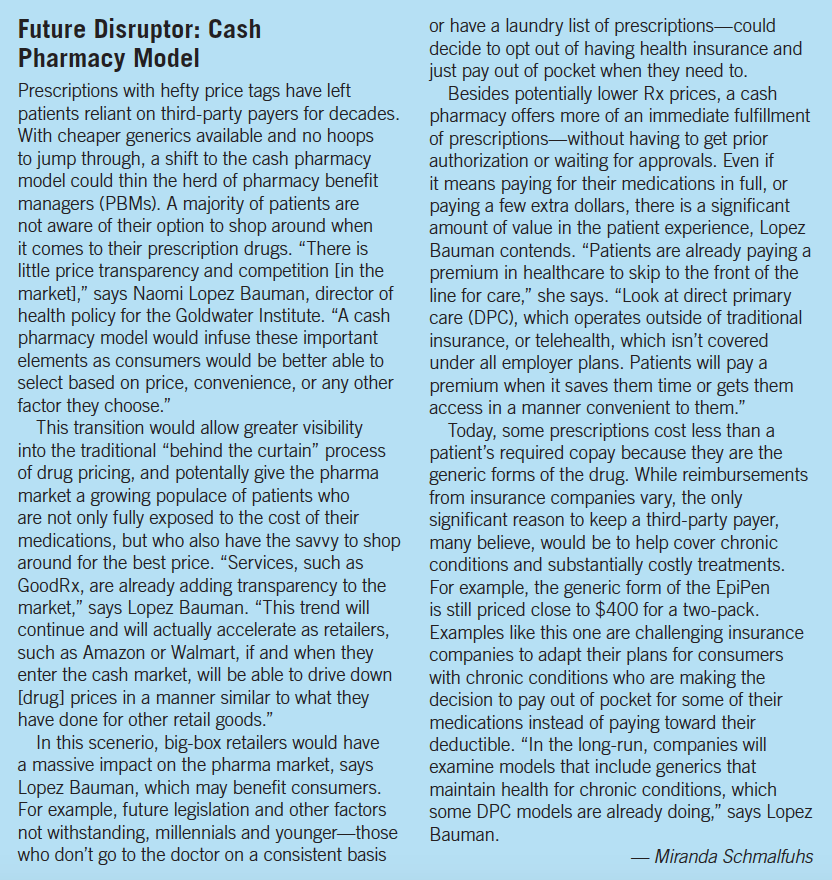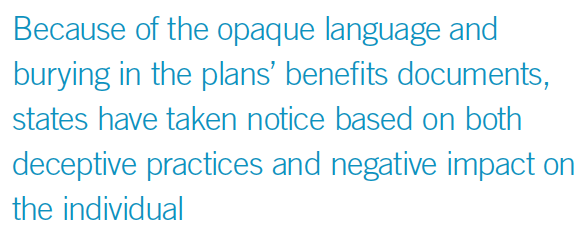Making Sense of Copay Accumulators
Pharmaceutical Executive
The industry’s quest to get a handle on the cost-shift implications of these new programs and the risks for patient access and pharma’s bottom line.
A look at how the industry is getting a handle on the cost-shift implications of copay accumulator programs, including their impact on patient access to specialty drugs and the downstream risks for pharma’s bottom line
A group of industry experts presented at CBI’s Coupon and Copay Forum in October, which devoted the first half of the two-day conference to the topic of copay accumulators. While the audience largely comprised pharma leaders and service providers charged with patient access, many were new to the conference and the effect of copay accumulator programs. Patients and pharma have been caught unaware of the copay accumulator trend, which CBI first heard about at its annual Patient Access and Assistance Programs (PAP) conference in March 2018. Since then, CBI has included the topic at its related events.
Christopher Dowd, chairperson of the October forum and executive vice president, market and product development, with ConnectiveRx, defined the mechanics behind accumulators in benefit plan schemes: Copay assistance and coupons are counted toward a patient’s deductible. Instead of the coupons helping patients with their out-of-pocket expenses, pharmacy benefit managers (PBMs) found a way to count their use against patient deductibles. Dowd said data showed between 5% to 15% of patients are affected by accumulators because of the resulting higher out-of-pocket costs. Other data from a National Business Group on Health survey found that 50 million lives are affected by copay accumulators; these are included in benefit plans for 17% of approximately 140 employers in companies that have less than 5,000 workers.
As noted at the conference, copay assistance and copay coupons from pharmaceutical manufacturers are a highly resourced and integral part of a pharma brand’s affordability budget and market access strategy. In reality, copay assistance has become an extension of a safety net provided by manufacturers that doesn’t exist in the current economic and healthcare model in the US. The problem in that current system of what was called “compounding dysfunction” is the emergence of counter-schemes by PBMs and payers that leave pharma-and patients, advocacy groups, and physicians-scrambling to ensure that out-of-pocket costs don’t overburden patients, lead to unfilled prescriptions, and are followed by higher-cost medical outcomes and an unhealthy or severely compromised quality of life by individuals.
The trend in private insurance is moving increasingly toward high-deductible plans, a mechanism for employers to shift the financial burden of healthcare to their employees. Seeking to limit costs further, employers asked for more discounts from their plans. That’s when the copay accumulator plans began to emerge.
Sidebar: The Cash Pharmacy Model; click to enlarge

When benefit plans started implementing the new copay accumulators, language was buried deep within the particular benefit plan. In fact, as reported in Drug Channels,1 the AIDS Institute became concerned by the impact copay accumulators would have on those accessing HIV and hepatitis C drugs. Based in Tampa, Fla., the Institute began searching the state’s qualified health plans online to determine how an individual would be able to find out if a plan had a copay accumulator or coupon limitation policy. Even with the benefit of knowledge-the Institute knew what terms to search for-it still took it “seven steps to find a reference to copay accumulators for Florida Blue, the largest private insurer in Florida. The copay accumulator language was finally discovered on page 47 in a section called “Pharmacy Limitations and Exclusions” within a 144-page “Schedule of Benefits” document that is part of the plan contract.
The AIDS Institute isn’t the only organization interested in how copay accumulators disproportionately affect patients who are on specialty drugs with limited-to-no generic or therapeutic alternatives. The Patient Access Network (PAN) Foundation, The Arthritis Foundation, the National Hemophilia Foundation, and Aimed Alliance, a not-for-profit health policy organization, have all had representatives speaking on this topic at recent CBI conferences. Presenting at an event in August, Kollet Koulianos, senior director of payer relations at the National Hemophilia Foundation, told the story of one 27-year-old hemophilia patient who
Kollet Koulianos

reached out because of financial concerns around accessing his needed medicine. Prior to the implementation of his plan’s accumulator program, the patient was able to afford the $38,000 for his maintenance drugs with the assistance of manufacturer copay coupons. After the accumulator, he was unable to afford the $6,350 deductible. While it took Koulianos 40 days to help the patient get his medications, he was left with untreated bleeds, which resulted in internal bleeding with additional surgeries to correct. The patient has been in and out of the hospital, is currently in a wheelchair, and is not working, all at a cost of $3.5 million.
Many of these patient-focused organizations want to place their focus on the employer education component (see more here). Collectively, the advocates believe employers don’t objectively understand the net effect of the copay accumulators. And they contend that short-sighted transactional decisions to include an accumulator can lead to longer-term health problems for employees.
Anecdotally related at the conference is when a copay accumulator is instituted in an employer’s health plan, and the spouse of the CEO or executive team is unable to get their or their family’s medications at the prices they were previously paying. That changes the benefit plan for the company very quickly.
After employer education, much of the attention is on legislation. Because of the opaque language and burying in the plans’ benefits documents, states have taken notice based on both deceptive practices and negative impact on the individual. Bans of copay accumulator programs have been enacted in Arizona, Illinois, Virginia, and West Virginia, with similar bills pending in Connecticut, Indiana, Kentucky, and North Carolina. Confusion reigns on the federal level, as the Centers for Medicare and Medicaid Services (CMS) changed its direction on copay accumulators for 2020, deferring the addressment of conflicts and stakeholder concerns until 2021.

Meanwhile, pharma isn’t pleased, but there is as yet no recorded data of downstream effects to its plans or budgets. In this Pharm Exec article published last December, the author stated “copay offset programs are utilized to offset patient out-of-pocket costs, on average, 38% of the time for specialty brand prescriptions and 15% of the time across retail brands. Thus, brand teams have allocated budget to fund these programs accordingly.”
Pharma has the potential for revenue loss due to accumulators, as well as the allocations for servicing the coupon programs. What was recommended at the October conference was careful and consistent documentation from service providers. If spikes in unfilled prescriptions, increased call volumes from patients, or decreased copay card usage, an accumulator problem could be pinpointed and brand teams can get ahead of the problem.
Where will the copay accumulators story end? Legislation continues, but there are no illegalities of the arrangements as yet determined by the Office of the Inspector General (OIG) or Department of Justice (DOJ). However, the court of public opinion could weigh in as patient education and awareness also ramps up. NeedyMeds, a public-facing website, holds insurers accountable in its Copay Cards FAQ2: “With these programs, the insurance companies collect your deductible twice-once from the pharma company that supports the copay card and then again from the patient who has to meet the deductible.”
Lisa Henderson is Pharm Exec’s Editor-in-Chief. She can be reached at lhenderson@mmhgroup.com
References
1. https://www.drugchannels.net/2018/06/hidden-policies-search-for-copay.html

Trump: 'Major Tariff' on Pharmaceuticals Coming Soon
Published: April 9th 2025 | Updated: April 9th 2025“We’re going to tariff our pharmaceuticals, and once we do that, they are going to come rushing back into our country," President Donald J. Trump said during a Tuesday night dinner in Washington.